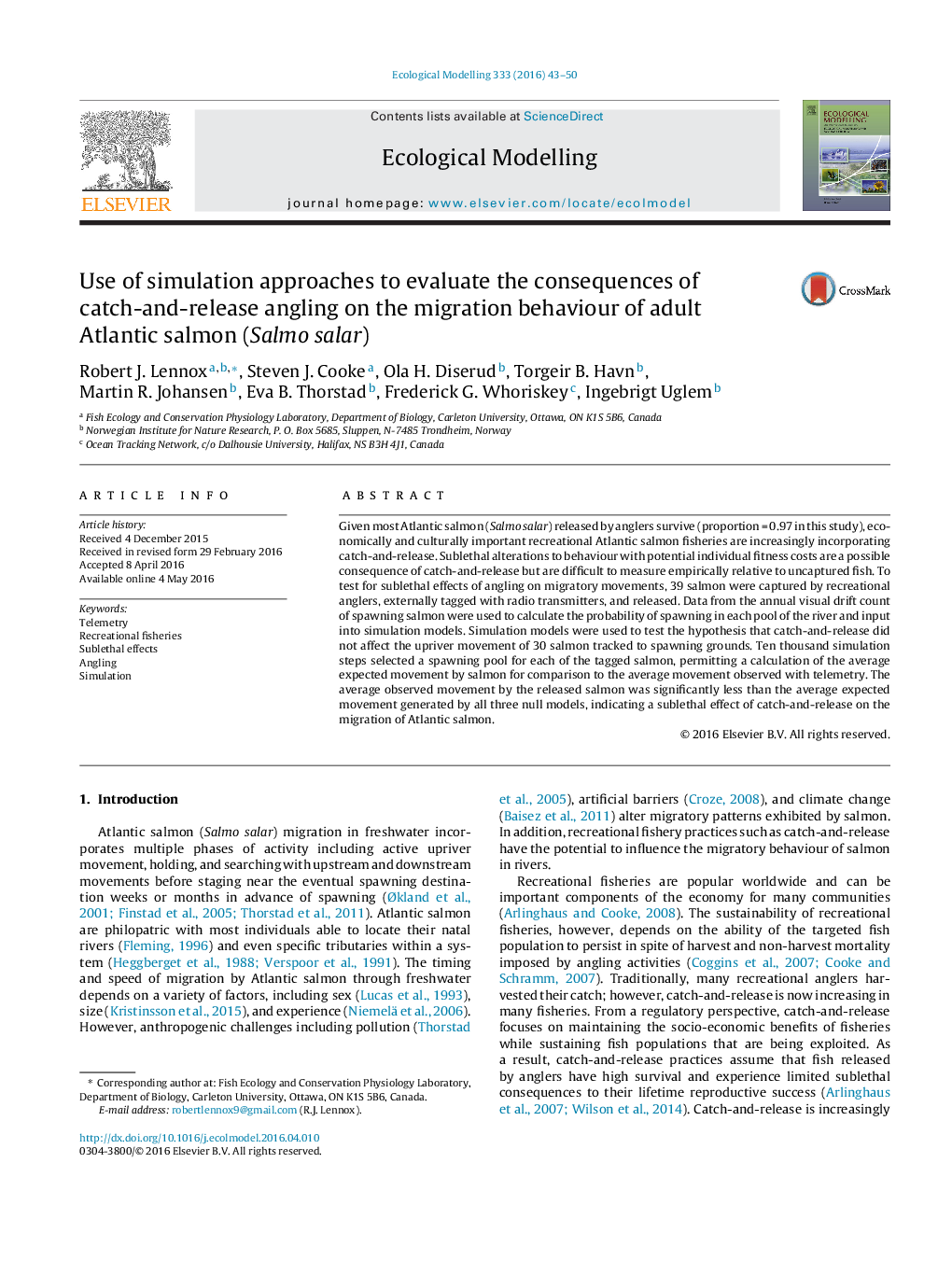| Article ID | Journal | Published Year | Pages | File Type |
|---|---|---|---|---|
| 6296115 | Ecological Modelling | 2016 | 8 Pages |
Abstract
Given most Atlantic salmon (Salmo salar) released by anglers survive (proportion = 0.97 in this study), economically and culturally important recreational Atlantic salmon fisheries are increasingly incorporating catch-and-release. Sublethal alterations to behaviour with potential individual fitness costs are a possible consequence of catch-and-release but are difficult to measure empirically relative to uncaptured fish. To test for sublethal effects of angling on migratory movements, 39 salmon were captured by recreational anglers, externally tagged with radio transmitters, and released. Data from the annual visual drift count of spawning salmon were used to calculate the probability of spawning in each pool of the river and input into simulation models. Simulation models were used to test the hypothesis that catch-and-release did not affect the upriver movement of 30 salmon tracked to spawning grounds. Ten thousand simulation steps selected a spawning pool for each of the tagged salmon, permitting a calculation of the average expected movement by salmon for comparison to the average movement observed with telemetry. The average observed movement by the released salmon was significantly less than the average expected movement generated by all three null models, indicating a sublethal effect of catch-and-release on the migration of Atlantic salmon.
Related Topics
Life Sciences
Agricultural and Biological Sciences
Ecology, Evolution, Behavior and Systematics
Authors
Robert J. Lennox, Steven J. Cooke, Ola H. Diserud, Torgeir B. Havn, Martin R. Johansen, Eva B. Thorstad, Frederick G. Whoriskey, Ingebrigt Uglem,
